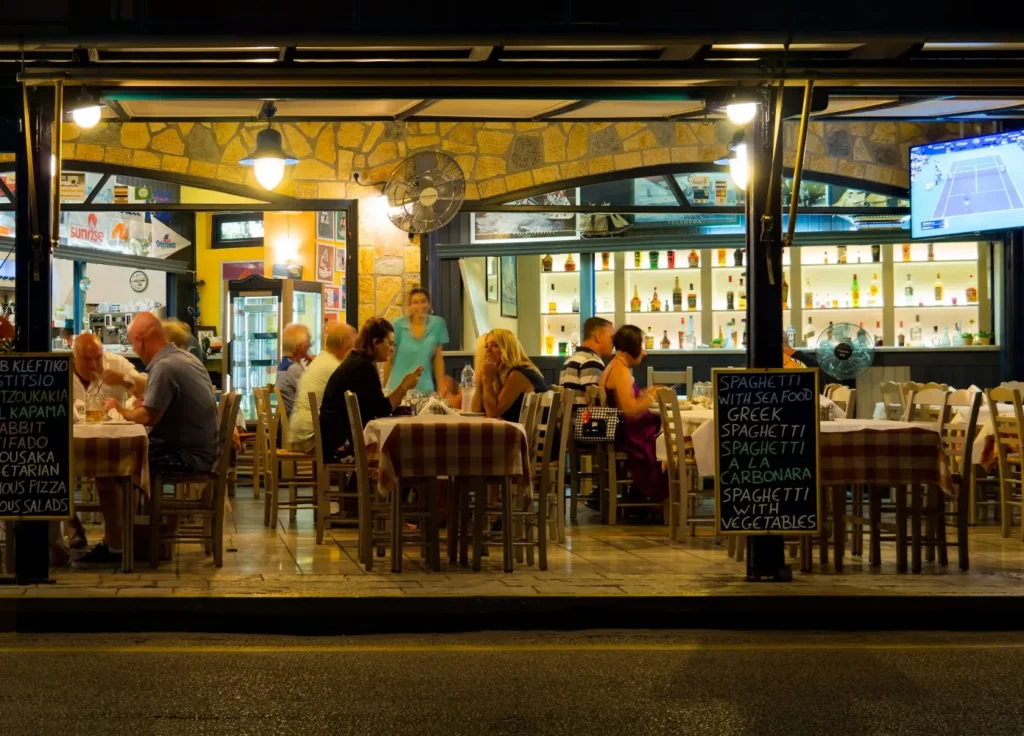In an era where real estate is at a premium, particularly in bustling urban centers, compact dining spaces have become the new normal. Whether you’re running a cozy café, a fast-casual restaurant, or a chic bistro, maximizing a small space without compromising on the dining experience is a real challenge. So, how can you make the most of a compact space? Let’s explore ways to streamline your dining area and maintain an efficient, stylish, and functional environment.
1. Smart Layout Design
When space is tight, every inch matters. One of the first questions to ask yourself is: how can I create a layout that maximizes seating capacity while keeping the dining experience comfortable? This is where smart design comes into play.
Opt for flexible seating arrangements such as small, moveable tables that can be rearranged depending on the size of the dining group. Booth seating against walls can save floor space while maintaining comfort. Round tables are another great option because they allow for more efficient seating without taking up too much room.
Additionally, consider the flow of traffic. Can your waitstaff move around easily without bumping into customers? A well-thought-out floor plan can significantly enhance the efficiency of your operations while offering a pleasant dining experience.
2. Multi-Functional Furniture
In a compact dining space, furniture should do more than just look good—it should serve multiple purposes. Have you ever been to a café where the chairs double as storage, or where a bar counter provides both seating and a serving area? These are perfect examples of how multi-functional furniture can streamline your space.
Look for tables that have built-in storage for napkins, menus, or condiments. Bar seating along a window or wall can also double as a display area for your daily specials. Stackable chairs and foldable tables offer flexibility, allowing you to clear space when needed for events or deep cleaning.
3. Vertical Storage Solutions
In compact spaces, if you can’t go wide, go vertical! This is where vertical storage solutions come into play. Instead of cluttering your floor space with items like glassware, tableware, or condiments, take advantage of your walls.
Install shelving units or hooks for items that are frequently used, but don’t need to be stored at table level. Not only does this keep your dining area clutter-free, but it also adds to the décor, giving your restaurant a more organized and polished appearance. A few well-placed shelves or hanging baskets can hold everything from utensils to decorative plants, bringing both functionality and style to your space.
4. Efficient Kitchen Equipment
How can a compact kitchen keep up with a bustling dining area? The answer lies in choosing the right kitchen equipment. In smaller spaces, every piece of equipment should serve a purpose and ideally offer multiple functions.
Combi ovens, for example, can bake, roast, steam, and even grill, saving both space and energy. Under-counter refrigeration, wall-mounted shelves, and pull-out storage drawers can make the most of every nook and cranny. By reducing the footprint of your kitchen equipment, you can free up valuable space for prep areas and make room for a streamlined workflow.

5. Creative Use of Lighting and Mirrors
Is there a way to make a small space feel larger without breaking down walls? Absolutely. The strategic use of lighting and mirrors can do wonders for the perception of space in your restaurant.
Opt for soft, diffused lighting that creates an inviting ambiance without making the space feel cramped. Pendant lights above tables or bar areas add a touch of elegance while maintaining a cozy feel. Mirrors, when placed thoughtfully, can reflect light and create the illusion of more space. A mirror on one wall or behind the bar can make even the smallest dining area feel open and airy.
6. Streamlined Menu Offerings
Sometimes less is more, even when it comes to your menu. A smaller kitchen and dining space often mean less room for extensive food prep. So, how do you maintain quality while minimizing menu items? By streamlining your menu.
Focus on dishes that are easy to prepare, require minimal equipment, and use overlapping ingredients. For example, a signature sauce could be used for multiple dishes, or a fresh ingredient like herbs or vegetables could serve as a garnish across several meals. By simplifying your offerings, you can speed up service and reduce clutter both in the kitchen and on the dining tables.
7. Technology to Optimize Operations
In today’s digital age, technology can be a powerful ally in streamlining operations, particularly in compact spaces. From contactless payment systems to digital menus, these innovations reduce physical space requirements while enhancing the customer experience.
Imagine having a self-ordering kiosk or mobile app for orders that reduces the need for bulky point-of-sale systems or manual ticketing. With the growing popularity of online ordering and delivery services, integrating these systems into your business can also reduce the need for large dining areas, as more customers choose takeout or delivery.
Compact Doesn’t Mean Compromised
Dealing with compact spaces doesn’t mean compromising on comfort, functionality, or style. Through smart design, multi-functional furniture, and efficient kitchen equipment, you can create a space that is as functional as it is inviting. And remember, a smaller space allows for a more intimate dining experience, which many customers appreciate in today’s fast-paced world.
Looking for expert advice on how to maximize your kitchen space? Kilowa Design, a leader in commercial kitchen design, can help you create an efficient, compact kitchen that doesn’t compromise on quality. Let’s make your space work for you—reach out to Kilowa Design today!







